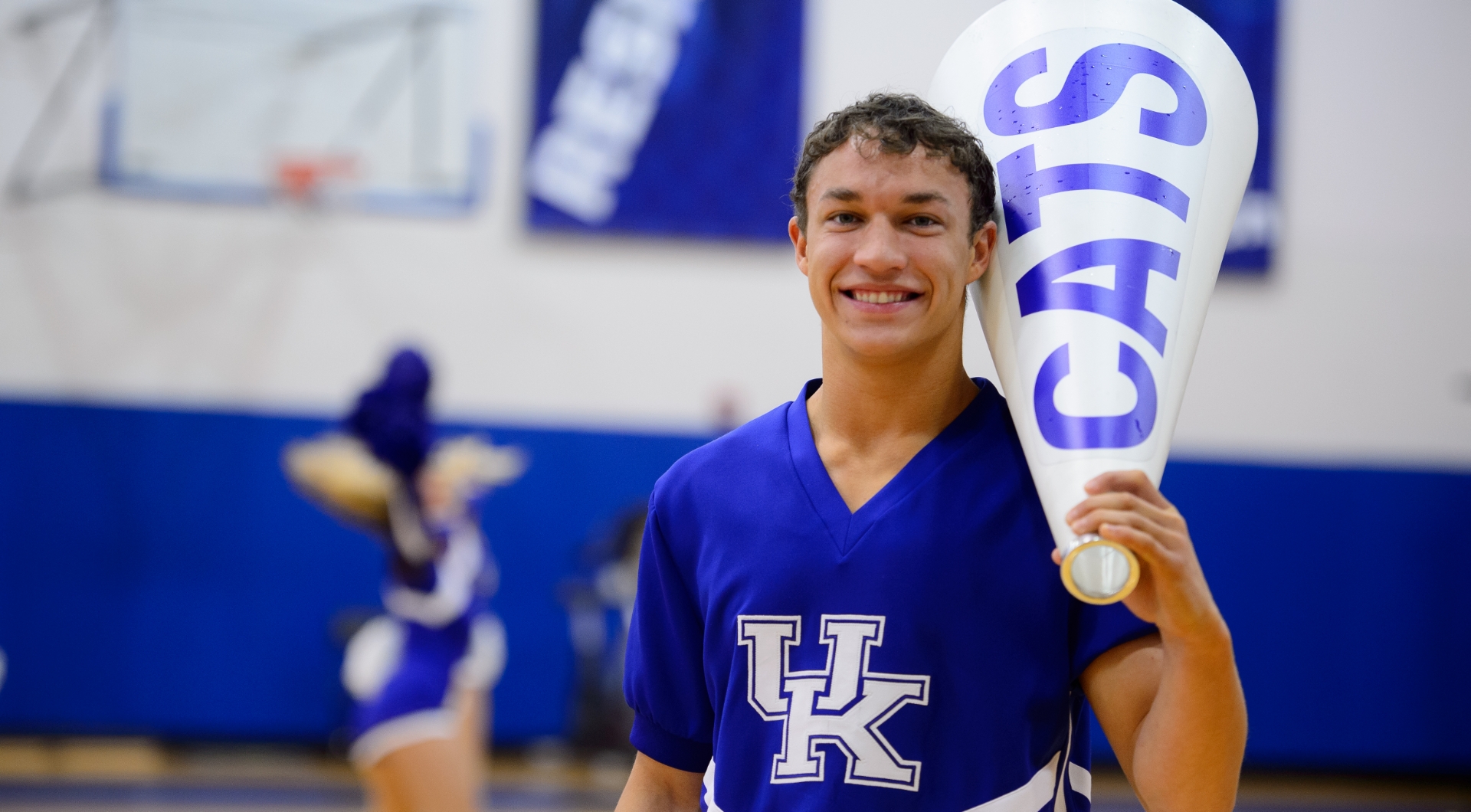
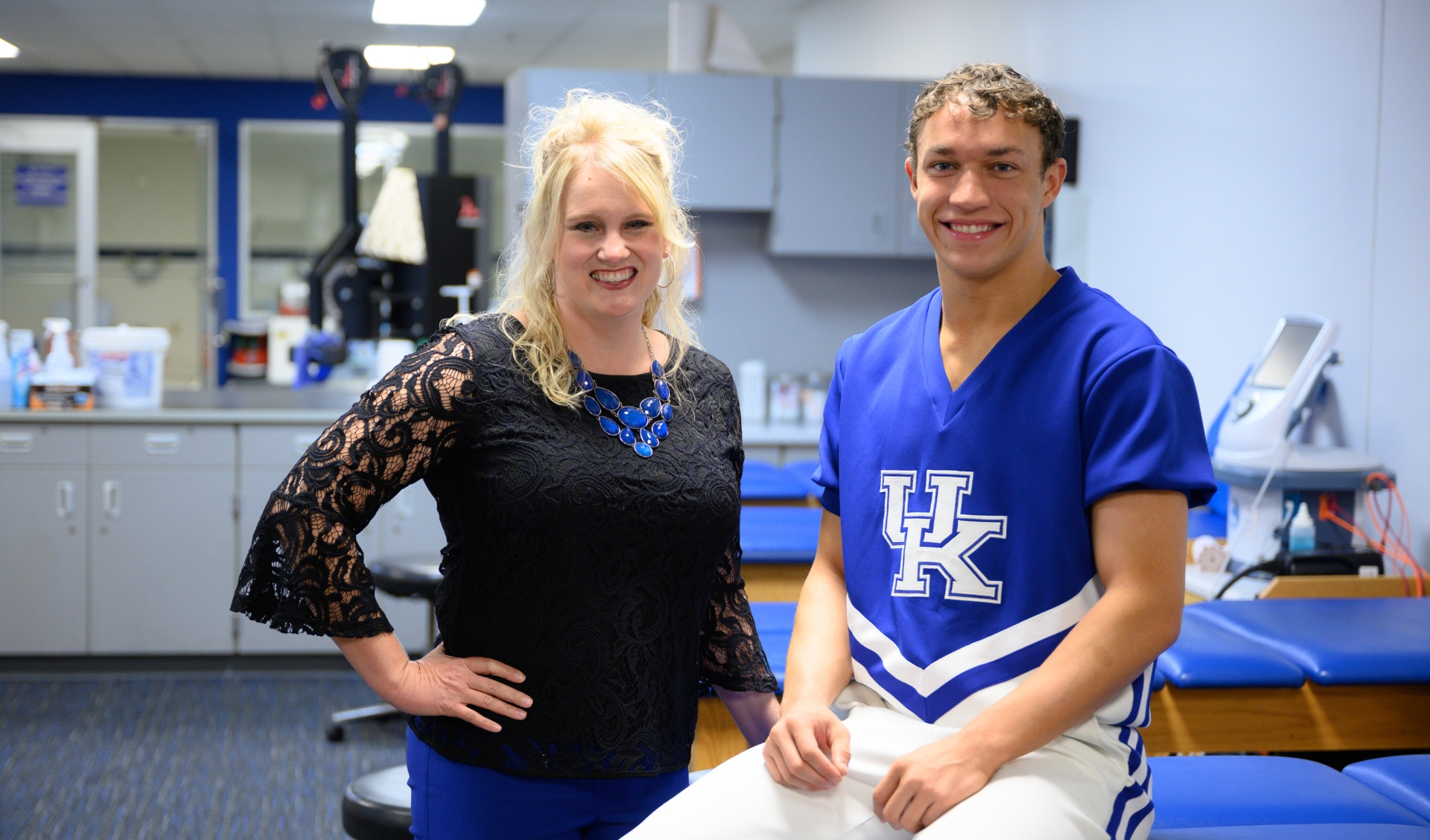
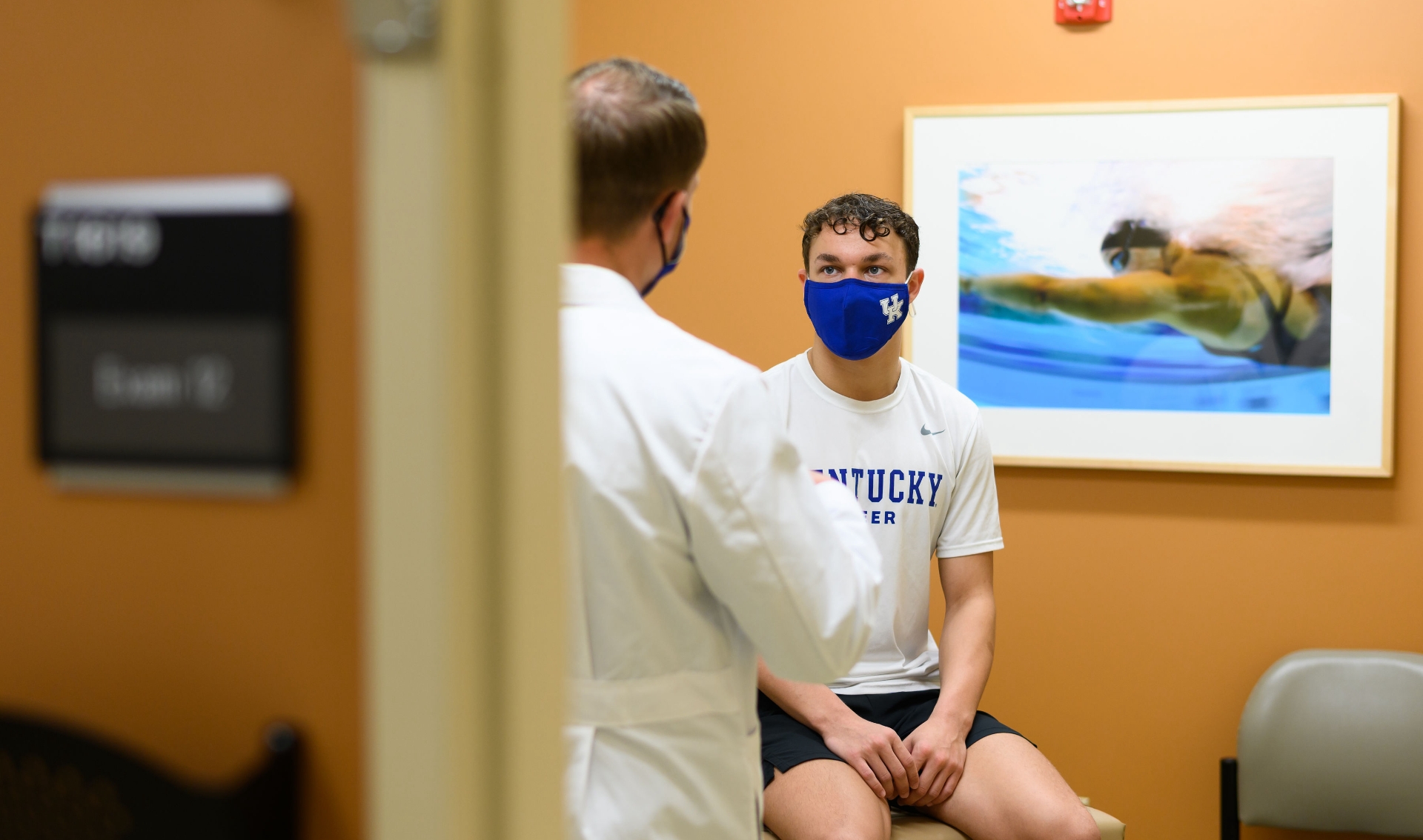
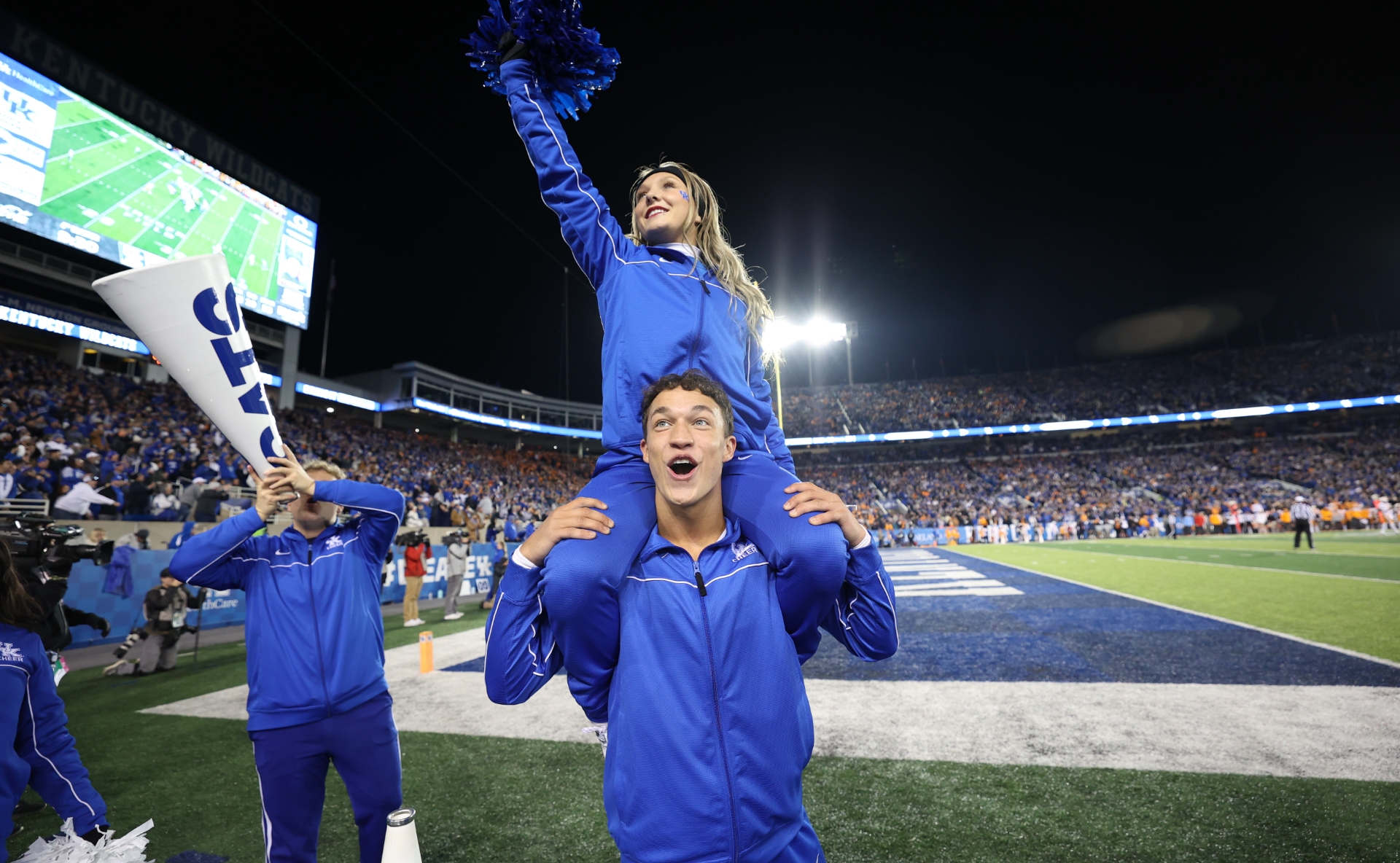
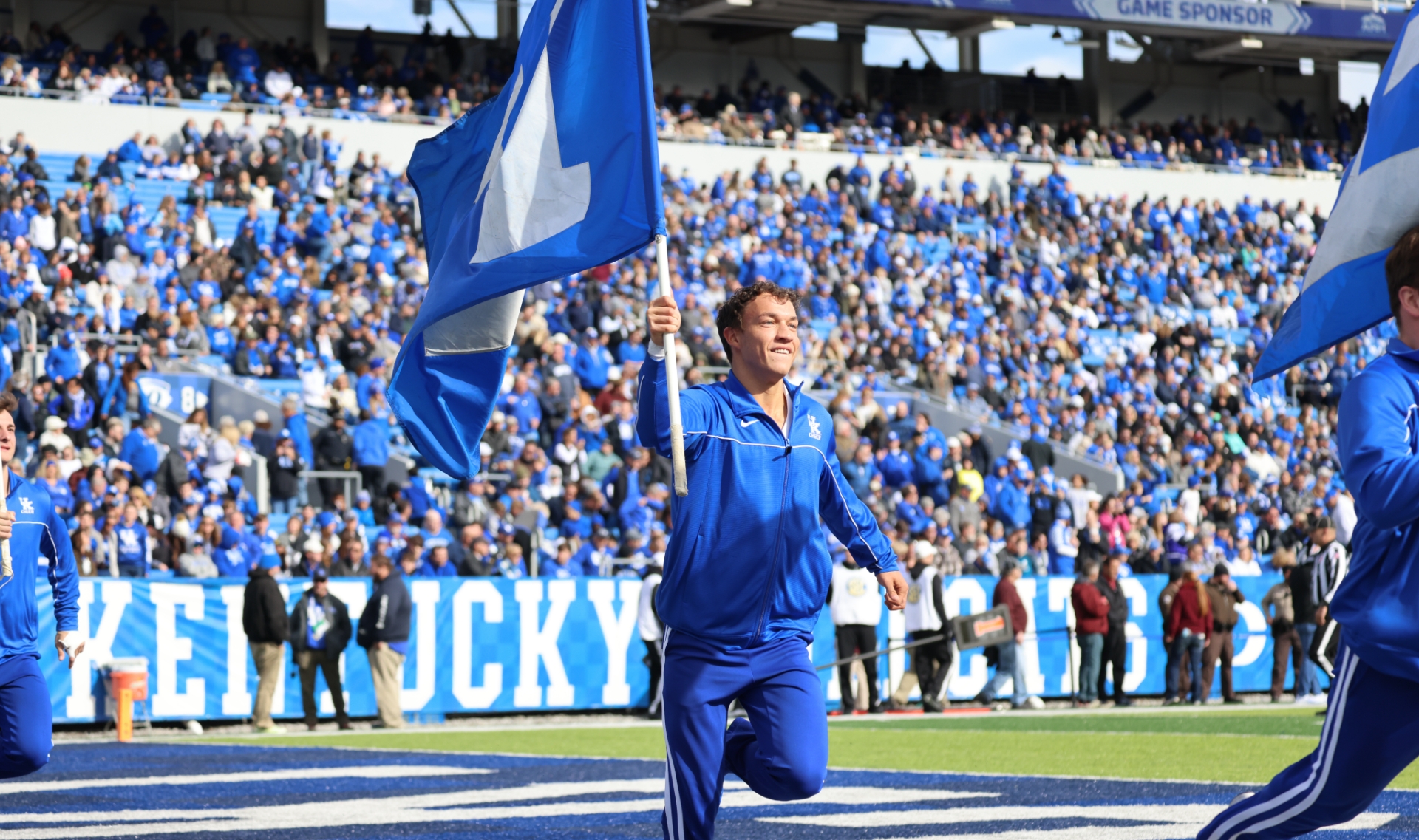

Back on the Mat
20-year-old Travis Johnson has been cheerleading since he was young, following in the footsteps of his older sister. After he joined UK’s championship-level cheer team in college, he worked hard to keep his body in peak condition—until he dislocated his shoulder.
Before the dislocation, Travis had some shoulder pain from an injury in his first semester, but he wasn’t concerned about it. Shoulder pain is common, especially with cheerleaders like Travis who serve as a sturdy base for the lightweight flyers. But during a 360-degree twist, Travis felt his shoulder partially dislocate. He pushed through, but the pain got worse as the days went on and he kept attending practice.
“I throw five full-ups and they’re dropping; I’m not hitting any of them,” said Travis. “And then I did hit, but I over-rotated just a little bit. My shoulder dislocated and then popped right back in.” That night, Travis couldn’t sleep because of his pain. The next day, he met with Dr. Kimberly Kaiser, Associate Professor of Orthopaedic Surgery and Sports Medicine and one of the team physicians for UK Cheer.
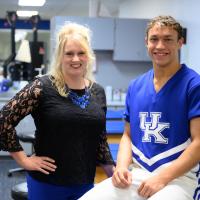
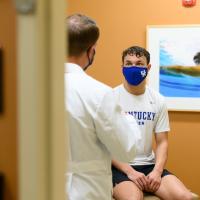
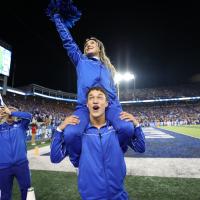

“It’s not uncommon with male cheerleaders putting female cheerleaders over their heads in sequential stunt positions that their shoulders shift a little bit or feel unstable, especially combined with the difficulty of stunts our UK cheerleaders perform,” said Dr. Kaiser.
An MRI revealed the extent of the damage to Travis’s shoulder: a labral tear and fractured bones from the force of the shoulder dislocating and snapping back into place. Travis had two choices: he could undergo surgery and sit out the rest of the season and Nationals, or he could try to compete at Nationals and do the surgery after. As much as he wanted to be a part of the Nationals team, he knew it wasn’t the right choice—he, and his teammates, had to be able to trust his body.
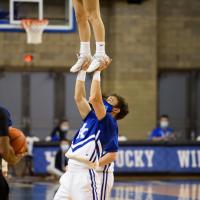
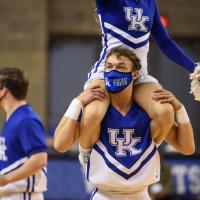
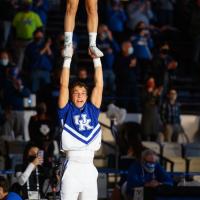
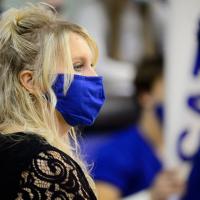
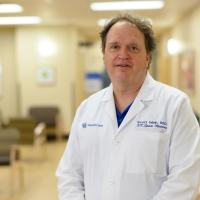
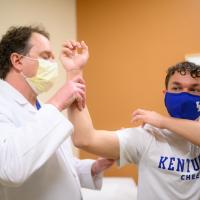


“There was no guarantee that my shoulder wouldn't give out again,” said Travis. “That uncertainty was too much for me to risk, especially on the Nationals mat.” After he broke the news to his team, Travis met with Dr. Scott Mair, a surgeon at UK HealthCare Orthopaedic Surgery & Sports Medicine. They scheduled his surgery for the following week.
“It’s an outpatient surgery that involves sutures that repair the torn part of the labrum,” said Dr. Mair. “Patients feel reasonably normal after a couple of months—and that’s when it starts to get dangerous, because you feel like you’re on the road to recovery but not yet fully healed.” Dr. Mair and Dr. Kaiser both credit Travis’s commitment to rehab, and UK’s athletic trainers and physical therapists, for getting him back to full strength for the fall 2021 cheer season.
“We typically do a lot of rehab to get their shoulder strength back and cue them in proper positioning for lifting and stunting to prevent reinjury,” said Dr. Kaiser. “It’s rewarding to see how hard these athletes work in rehab, and many of them end up stronger than before because they put in so much hard work.”
As a pre-med major at UK, Travis’s relationship with Dr. Kaiser and Dr. Mair has opened the door to exploring the field of orthopaedics. Cheer has also connected him to Kentucky Children’s Hospital and the opportunity to cheer with pediatric patients—one of his favorite experiences as a Kentucky cheerleader.
“We’re all Wildcats,” said Travis. “We’re all pushing to do better in every way, whether it’s on the field as an athlete or as a healthcare worker.” Travis, now a sophomore, is back on the mat at full strength. With his team around him, he’s ready to tackle the challenge of winning their 25th national championship in early 2022. His shoulder injury gave him a new perspective on what it means to be a part of UK Cheer—and its lasting legacy.
“Being a Kentucky cheerleader is not just being an athlete,” said Travis. “It’s a lifestyle that you live. You’re held up to the successes of all the generations before you with 24 national titles. You’re not just leaving this program with those national titles—you’re leaving this program a better person.”






